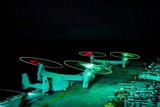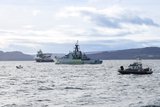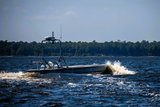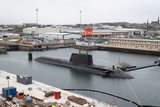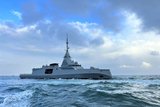Damen, Mexican Navy building POLA vessel
Damen Shipyards Group and the Mexican Navy are working together to build a Long Range Ocean Patrol (POLA) vessel, the company announced on 26 June.
With a length of 107m and a beam of 14m, the POLA vessel will be the Mexican version of the Damen’s SIGMA 10514. It will be able to sail at speeds of over 25 knots with a capacity of more than 20 days at sea.
Damen will build two of the six modular sections of the vessel at the Damen Schelde Naval shipyard in the Netherlands. The remaining four modules will be built in Mexico. The construction of these modules, along with the integration, will be carried out at a yard that cooperates on this with Damen.
During the construction of the modules in Europe, a Mexican team will be in the Netherlands to supervise the process and to receive knowledge transfer.
The first of the Dutch modules has already arrived in Mexico, where it is being integrated with two of those already built in Salina Cruz. The hull of the vessel has already been completed in drydock. It will now be prepared to receive the other three superstructure modules.
The POLA vessel will be capable of carrying out various missions including long range SAR, surveillance and patrol operations, and humanitarian relief.
The flagging ceremony of the POLA is planned for November 2018. A full integrated process of setting to work, commissioning, training, tests and trials will continue in 2019.
More from Naval Warfare
-
![How the UK Royal Navy is powering up its hybrid fleet to combat new threats]()
How the UK Royal Navy is powering up its hybrid fleet to combat new threats
Since it announced its move towards a new “hybrid navy” earlier this year, the force has announced a number of new uncrewed technologies in the works.
-
![US and UK to begin Trident II D5 Increment 8 in October 2026]()
US and UK to begin Trident II D5 Increment 8 in October 2026
Trident II D5 Increment 8 will involve improvements to the shipboard navigation subsystem for the US Ohio and Columbia and the UK Dreadnought and Vanguard submarine classes.
-
![US Navy starts acquisition process for uncrewed maritime systems for support missions]()
US Navy starts acquisition process for uncrewed maritime systems for support missions
The USN is interested in uncrewed capabilities that can carry out explosive ordnance disposal, mine countermeasures, force protection, ISR and anti-submarine missions.
-
![HMS Agamemnon: details of the dive and what the Astute-class signifies for the UK Royal Navy]()
HMS Agamemnon: details of the dive and what the Astute-class signifies for the UK Royal Navy
As HMS Agamemnon moves closer towards joining the UK’s in-service submarine fleet, how does the sixth Astute-class fit into the Royal Navy’s defence strategy?
-
![French Navy frigates to align with Hellenic Navy after Aster missile enhancement]()
French Navy frigates to align with Hellenic Navy after Aster missile enhancement
The FDI frigates will have an enhanced warfare capability that matches the configuration of ships ordered by Greece.








